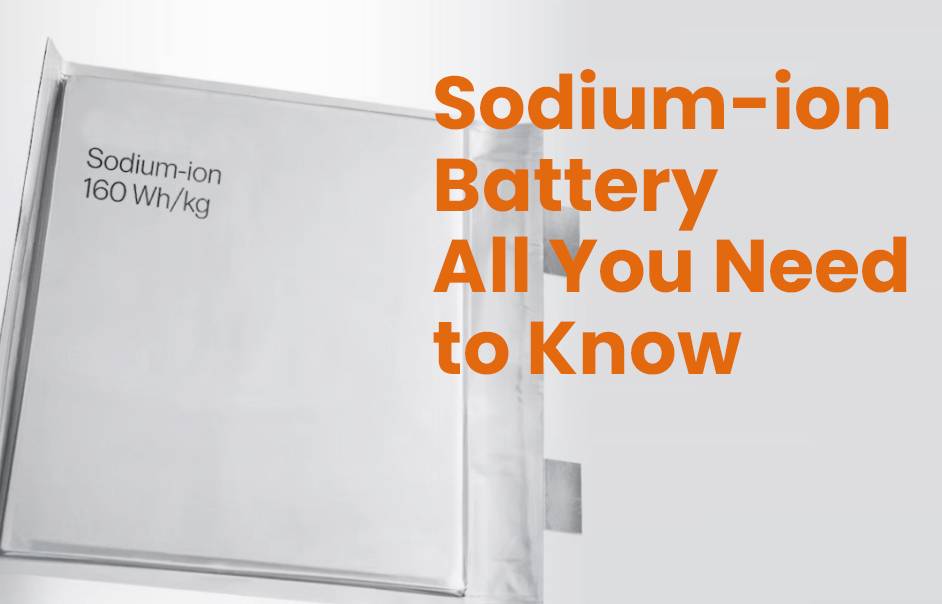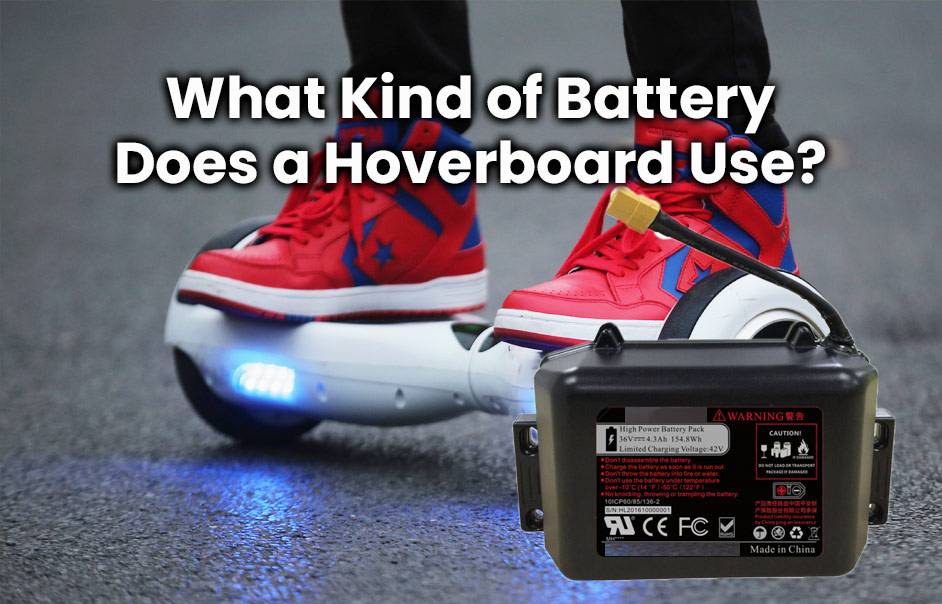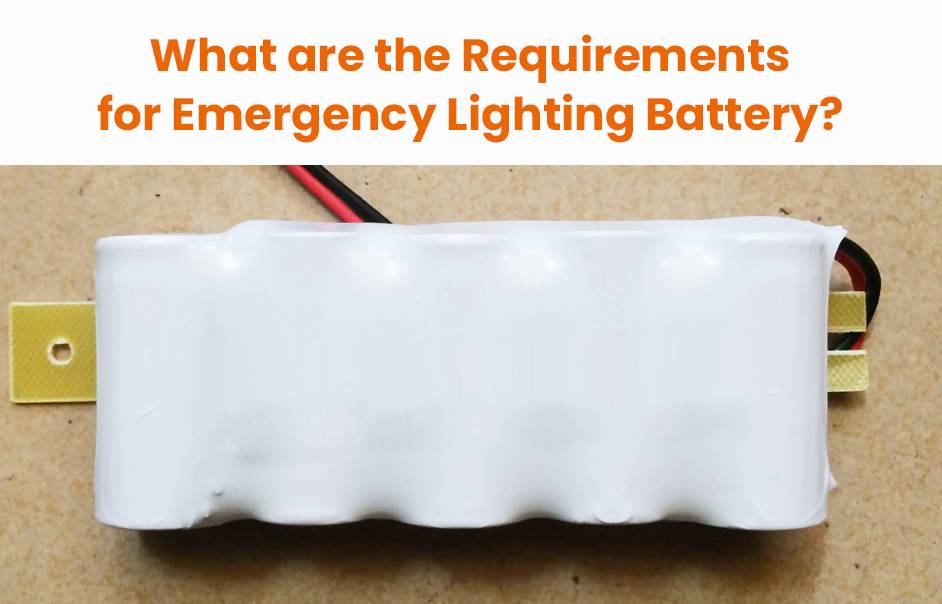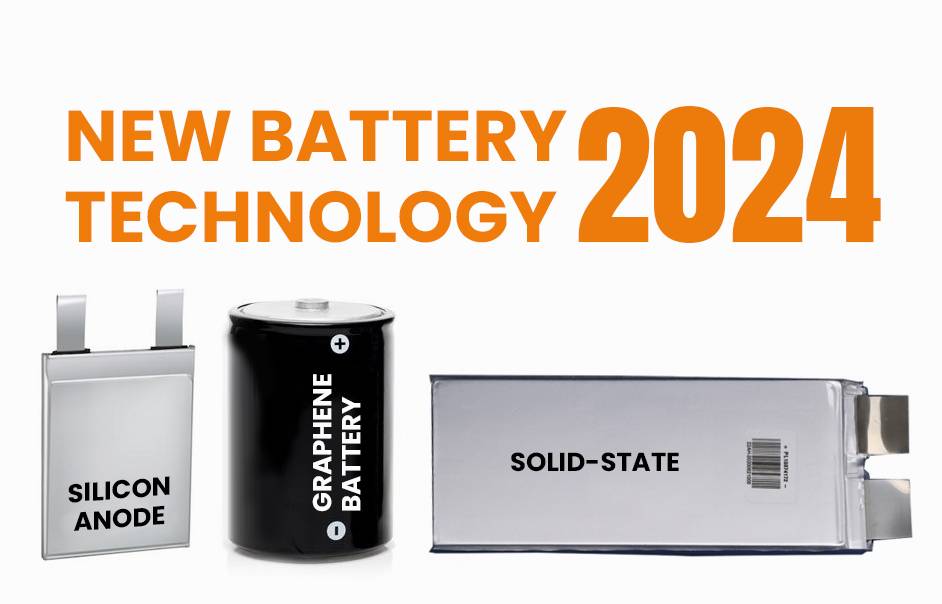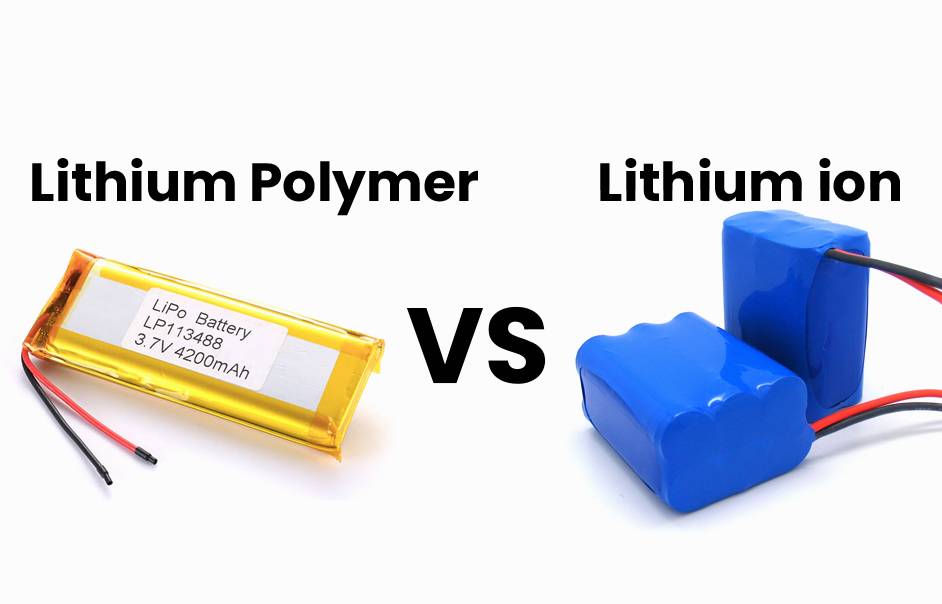Enter the future of energy storage with the rising star – the sodium-ion battery. While lithium-ion has long been the leader, sodium-ion batteries are making waves, poised to revolutionize the landscape. Join us on an exploration of this fascinating realm, uncovering why sodium-ion batteries are creating a stir in scientific and practical circles. So, get your coffee ready, settle in, and embark on the thrilling journey into the world of sodium-ion batteries!
How do Sodium-ion Batteries Work?
Sodium-ion batteries, emerging as potential alternatives to lithium-ion counterparts, operate on the movement of ions between electrodes – the anode and cathode. Charged sodium ions travel during charging and discharging, facilitated by an electrolyte that ensures ionic conduction.
This electrolyte, often containing sodium salts, prevents electronic conduction. Crucially, choosing suitable electrode materials is essential to accommodate reversible ion movement without structural damage. Despite being in early development, ongoing research aims to address challenges, making sodium-ion batteries promising contenders for future energy storage solutions with enhanced efficiency and durability.
Comparison with Lithium-ion Batteries
In the realm of energy storage, lithium-ion batteries have been the norm, but sodium-ion batteries are gaining ground as a potential alternative. Here’s a quick breakdown of their comparison:
- Electrode Materials:
- Lithium-ion batteries use lithium compounds for electrodes, while sodium-ion batteries utilize sodium-based compounds.
- Performance:
- Lithium-ion batteries are known for high energy density, longer lifespan, faster charging, and lower self-discharge rates.
- Sodium-ion batteries show promise in cost-effectiveness due to the abundance and lower cost of sodium resources, with enhanced safety in specific applications.
- Challenges and Potential:
- Sodium-ion batteries face challenges in achieving performance parity, especially in capacity and cycle life, compared to commercialized lithium-ion counterparts.
- Ongoing global research focuses on overcoming hurdles and optimizing sodium-ion battery technology for improved efficiency and scalability.
In conclusion, while sodium-ion batteries have hurdles to clear for widespread adoption, they hold potential as an affordable alternative for large-scale energy storage, thanks to the ample global supply of sodium. The journey to overcoming challenges is actively underway, paving the way for a future with diversified energy storage solutions.
Advantages of Sodium-ion Batteries
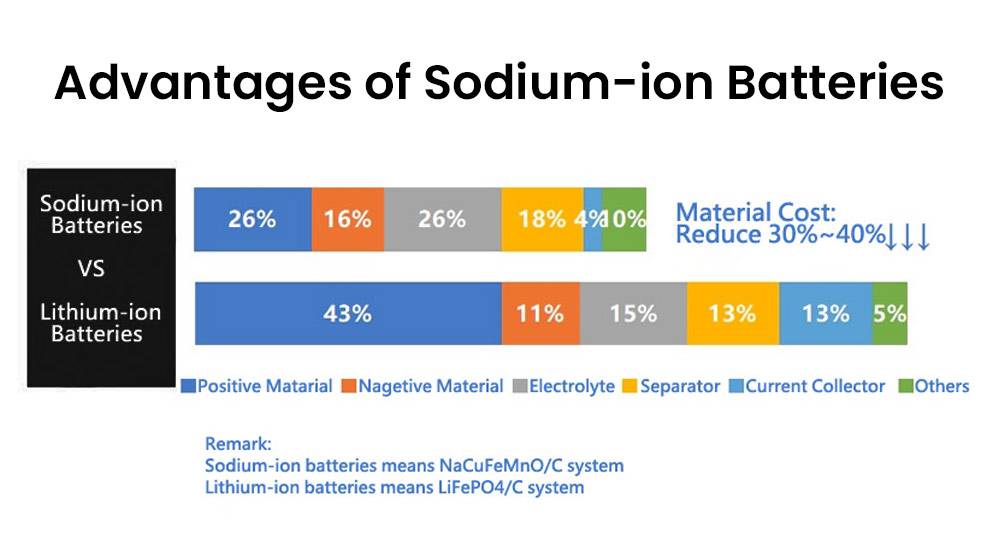
As a potential alternative to lithium-ion batteries, sodium-ion batteries bring several advantages to the table:
- Abundance and Cost-Effectiveness:
- Sodium-ion batteries leverage the abundance of sodium, making them more cost-effective compared to lithium-ion counterparts. This could lead to future cost reductions for consumers.
- Higher Energy Density:
- Sodium ions, with larger atomic sizes than lithium ions, enable higher energy storage per unit volume. This translates to increased capacity and longer-lasting battery life.
- Enhanced Safety Features:
- Sodium-ion batteries exhibit better stability under extreme conditions, reducing the risk of overheating and thermal runaway associated with lithium-ion batteries. This enhances safety and minimizes the potential for accidents.
- Environmental Impact:
- Sodium-ion batteries have a smaller environmental footprint as the extraction and disposal processes of sodium compounds are less environmentally concerning than extracting lithium from mineral deposits.
- Large-Scale Applications:
- Sodium-ion technology is well-suited for large-scale applications like renewable energy storage systems, offering scalability and cost advantages over alternative technologies.
With these advantages, sodium-ion batteries show great promise for various applications, prompting continued research and development for broader implementation in the future.
Challenges and Limitations
As promising as sodium-ion batteries are, they face several challenges and limitations:
- Lower Energy Density:
- Sodium-ion batteries have lower energy density compared to lithium-ion batteries, meaning they may store less energy in the same space. This could limit their application in devices requiring high energy storage.
- Cycling Stability:
- Cycling stability is a concern, as sodium-ion batteries often have shorter cycle lives than their lithium-ion counterparts. Frequent replacements or repairs may be necessary.
- Material Availability:
- Despite the abundance of sodium, finding suitable materials for efficient sodium ion storage in electrodes and electrolytes poses a challenge. Material availability and performance optimization are ongoing areas of research.
- Safety Concerns:
- Safety concerns arise due to the reactive nature of sodium metal. Proper handling measures are essential during manufacturing and usage to mitigate potential risks.
Despite these challenges, ongoing research focuses on addressing these issues through innovations in electrode materials and battery designs. While sodium-ion batteries may not match lithium-ion capabilities currently, they hold potential for cost-effective and environmentally sustainable applications, especially in renewable energy and electric vehicles.
As technology advances, we can anticipate improvements in sodium-ion battery performance, expanding their viability for diverse industries in the future.
Current Developments and Future Outlook

Potential alternative to lithium-ion batteries, significant progress has been made in recent years to address their limitations:
1. Increased Energy Density:
- Researchers are exploring different materials for anodes and cathodes, such as carbon-based materials, to enhance stability and increase specific capacities. These efforts aim to boost the energy density of sodium-ion batteries.
2. Nanotechnology for Improved Electrodes:
- Nanotechnology is being employed to manipulate the size and shape of nanoparticles in electrode structures. This enhances ion diffusion kinetics, potentially leading to faster charging rates and improved overall efficiency.
3. Optimization of Electrolyte Composition:
- Researchers are working on finding the right balance in electrolyte composition for sodium-ion batteries. Some are exploring new types of solid-state electrolytes to improve stability, especially at high temperatures.
Future Outlook:
- Sodium-ion batteries may extend beyond portable electronics to larger-scale applications like grid-level storage and electric vehicles (EVs). Their abundance and sustainability make them an attractive option for large-scale battery production.
Challenges to Address:
- Despite advancements, challenges remain, including cost-effectiveness, scalability, and safety concerns related to certain electrolytes. Ongoing collaboration across sectors is essential for further research and development.
Conclusion:
- While sodium-ion batteries are not yet commercially viable alternatives to lithium-ion batteries, the progress made suggests a promising future. Continued research, industry collaboration, and improvements in manufacturing processes are crucial for their potential widespread adoption.
As sodium-ion batteries continue to evolve, they may play a significant role in shaping the future of energy storage and contribute to a more sustainable and efficient energy landscape.
Conclusion
Sodium-ion batteries present a promising alternative to lithium-ion technology, addressing the rising need for efficient and sustainable energy storage. Despite facing challenges, ongoing global research is propelling significant advancements. Leveraging the unique properties of sodium-based materials, these batteries offer cost-effective and environmentally friendly solutions. Abundant, low-cost, and safe, sodium-ion batteries have transformative potential in renewable energy, electric vehicles, grid-scale storage, and portable electronics. Although hurdles like lower energy density persist, dedicated research aims to enhance performance, stability, and scalability, fostering a bright future for this emerging technology.

